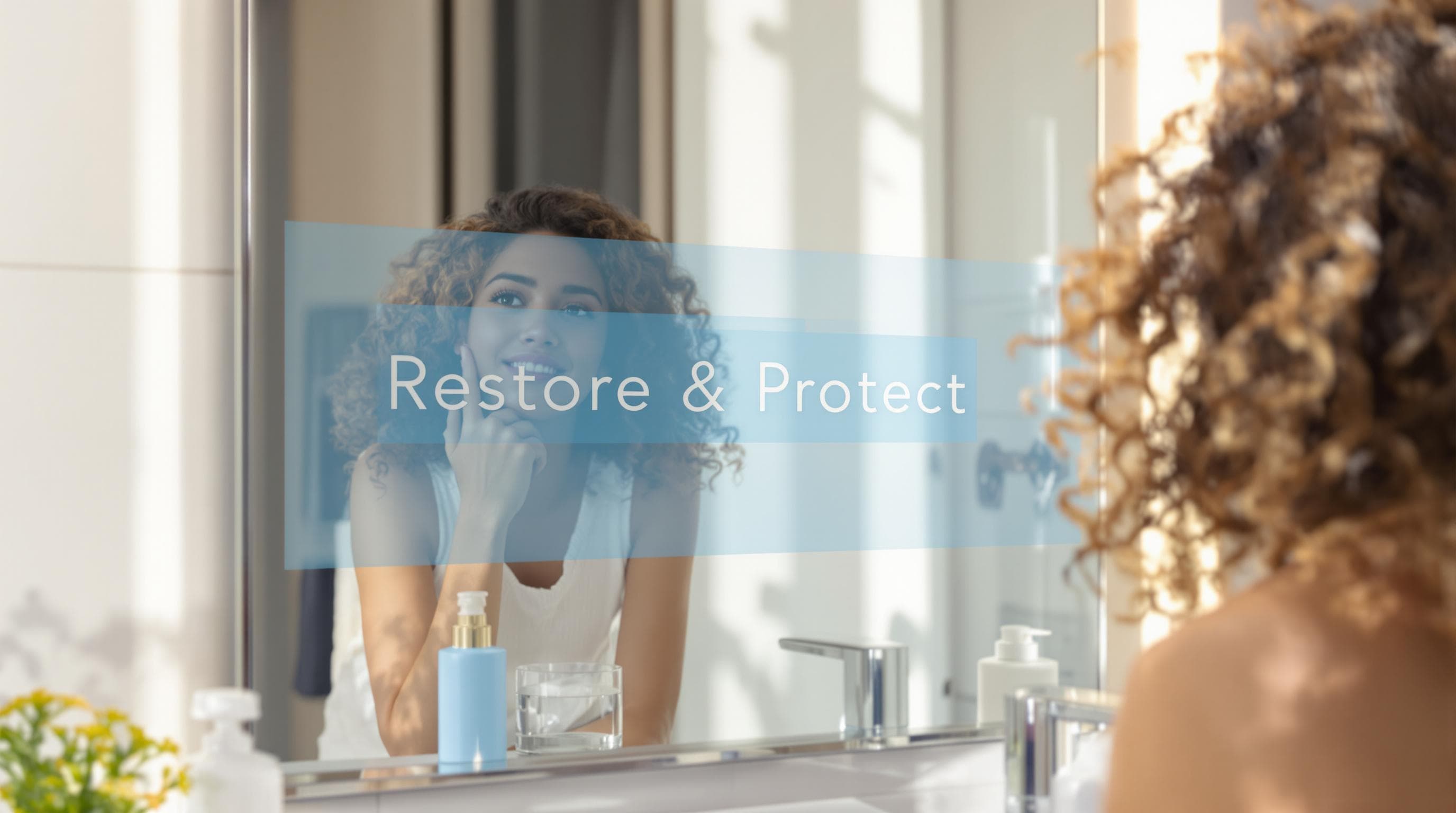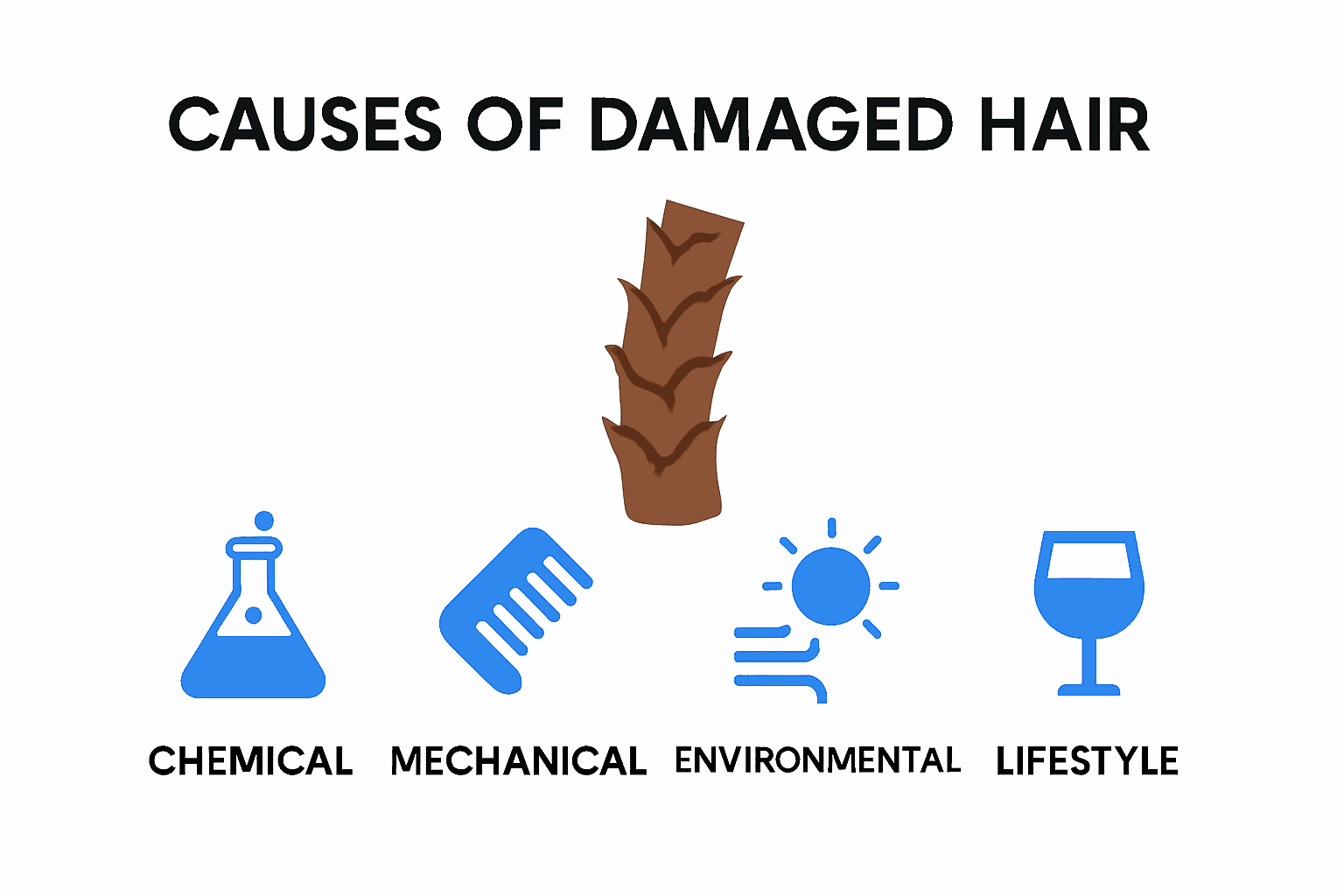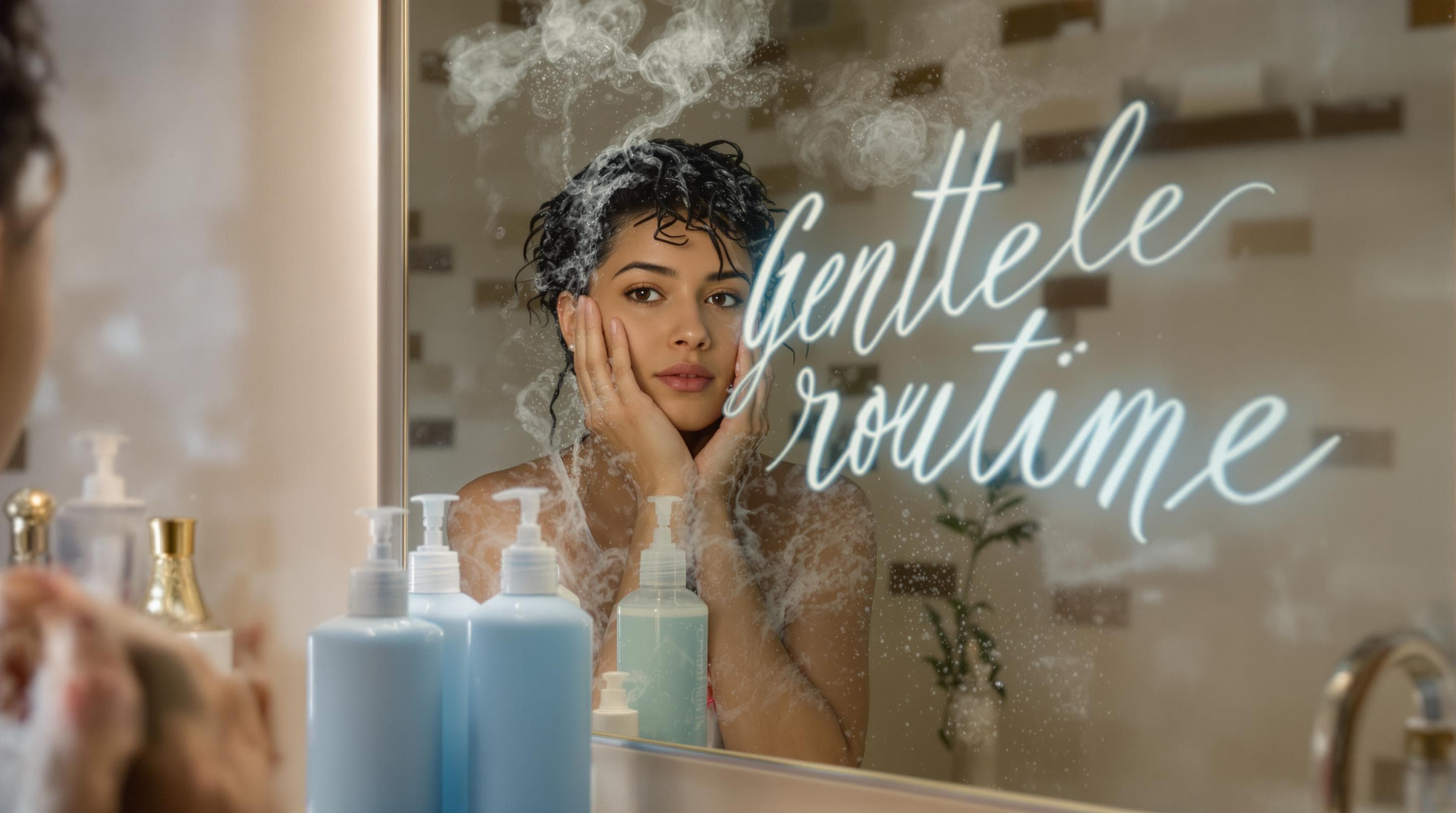Blog
Learning Materials
Damaged Hair Care Guide 2025: Restore, Protect & Grow
Updated: July 23, 2025

Everyone wants strong, shiny hair, but over 60 percent of people report battling damaged or thinning hair each year. Most believe expensive products or going heat-free are the magic fixes. The real secret is that understanding exactly what is breaking your hair can unlock lasting results that trendy products never deliver.
Table of Contents
- Understanding Causes Of Damaged Hair
- Effective Damaged Hair Care Routines
- Solutions For Hair Loss And Growth Tracking
- Personalized Care And Top Product Recommendations
Quick Summary
| Takeaway | Explanation |
|---|---|
| Assess the causes of damage | Understand chemical, mechanical, and environmental stressors impacting hair health. |
| Practice gentle hair care | Use sulfate-free shampoos and regularly condition to maintain moisture and protect strands. |
| Prioritize nutrition for hair health | Incorporate protein and essential vitamins to strengthen hair from within. |
| Avoid excessive heat styling | Use heat protectants and limit temperatures to preserve hair integrity. |
| Utilize personalized products and routines | Tailor selections based on individual hair profiles for optimized repair and growth. |
Understanding Causes of Damaged Hair
Hair damage is a complex process involving multiple environmental and personal factors that systematically break down hair's structural integrity. Understanding these underlying causes is crucial for developing an effective hair restoration strategy.

Chemical and Mechanical Stress
Chemical treatments represent a significant source of hair damage. Research in the journal Polymers indicates that processes like bleaching, perming, and chemical straightening cause substantial structural and chemical damage to hair fibers. These treatments alter hair's protein structure, creating microscopic fractures and weakening the keratin bonds that maintain hair strength.
Mechanical stress compounds this damage. Repeated brushing, tight hairstyles, excessive heat styling, and rough towel drying create additional strain on hair follicles. Each aggressive interaction incrementally compromises hair's protective cuticle layer, leading to increased fragility and potential breakage.
Environmental Degradation
External environmental factors play a critical role in hair deterioration. A study from the International Journal of Cosmetic Science reveals that ultraviolet radiation causes significant oxidative stress, resulting in protein degradation and pigment loss. UV-B rays primarily cause protein breakdown, while UV-A radiation triggers color changes, ultimately rendering hair more susceptible to damage.
Additionally, exposure to pollutants, extreme temperatures, and humidity creates cumulative stress on hair structures. Salt water, chlorine, and wind contribute to moisture loss and cuticle erosion, further compromising hair's natural protective mechanisms.
Physiological and Lifestyle Factors
Personal health and lifestyle choices significantly impact hair condition. Nutritional deficiencies, hormonal imbalances, and stress can interrupt normal hair growth cycles. Clinical research from NCBI highlights how traumatic alopecia can emerge from prolonged physical friction, inappropriate grooming techniques, and chemical product interactions.
Diet, hydration levels, and overall wellness directly influence hair health. Insufficient protein intake, vitamin deficiencies, and chronic stress can manifest as weakened, brittle hair prone to breakage. Understanding these interconnected factors provides a comprehensive approach to preventing and addressing hair damage.
For more insights into maintaining healthy hair, check out our comprehensive hair care guide.
Effective Damaged Hair Care Routines
Repairing and maintaining damaged hair requires a strategic and holistic approach that addresses both external treatment and internal nutritional support. Developing a comprehensive hair care routine can significantly improve hair health and prevent further deterioration.
Gentle Cleansing and Conditioning Techniques

The American Academy of Dermatology recommends using conditioner after every shampoo to moisturize and detangle hair effectively. This practice helps minimize breakage and restore hair's natural protective barrier. When washing, use lukewarm water and focus on massaging the scalp gently, avoiding aggressive scrubbing that can cause additional stress to fragile hair strands.
Choose sulfate-free shampoos designed for damaged hair, which clean without stripping natural oils. Look for products containing keratin, proteins, and natural oils that help reconstruct and strengthen hair fibers. Limit washing to 2-3 times per week to prevent over-drying and maintain the hair's natural moisture balance.
Nutrition and Internal Hair Health
Harvard Health highlights the critical role of nutrition in hair restoration. B vitamins particularly play a crucial role in supporting hair health. Incorporate foods rich in biotin, such as eggs, nuts, and whole grains. Protein-rich diet components like lean meats, fish, and legumes provide essential amino acids necessary for hair protein synthesis.
Supplementation can also support hair recovery. Vitamins like vitamin D, zinc, and iron contribute to hair follicle health and can help mitigate damage from within. Hydration is equally important - drinking adequate water helps maintain hair moisture and supports overall cellular health.
Protective Styling and Heat Management
The American Academy of Dermatology strongly advises against excessive heat styling. When heat styling is necessary, always use a heat protectant product to minimize potential damage. Select styling tools with adjustable temperature settings and keep heat below 365 degrees Fahrenheit to prevent cuticle destruction.
Opt for protective hairstyles that minimize mechanical stress. Loose braids, soft hair ties, and silk scrunchies can reduce friction and breakage. At night, use a silk or satin pillowcase to further reduce hair stress and maintain moisture. Regularly trim split ends to prevent further damage from traveling up the hair shaft.
Learn more about personalized hair growth strategies to develop a targeted approach for your specific hair needs.
Here is a summary table that outlines damage causes and their corresponding effects on hair, helping readers easily identify what leads to specific hair issues.
| Source of Damage | Mechanism of Damage | Resulting Hair Effects |
|---|---|---|
| Chemical Treatments (bleaching, perming, straightening) | Alters protein structure, weakens keratin bonds | Fractures, weakened, brittle strands |
| Mechanical Stress (brushing, heat styling, towel drying) | Strains cuticle layer, creates friction | Breakage, split ends, loss of strength |
| Environmental Exposure (UV, pollution, humidity, wind) | Causes oxidative stress, moisture loss, cuticle erosion | Fading, dryness, porous, fragile hair |
| Nutritional Deficiencies | Reduces essential nutrient supply to follicles | Thinning, slow growth, breakage |
| Hormonal Imbalance & Stress | Disrupts hair growth cycles, increases shedding | Hair loss, slower regrowth |
Solutions for Hair Loss and Growth Tracking
Navigating hair loss requires a comprehensive approach that combines advanced tracking technologies, medical interventions, and personalized treatment strategies. Modern solutions offer hope for individuals experiencing hair thinning and loss by providing targeted, data-driven approaches to hair restoration.
Medical Treatments and Interventions
Johns Hopkins Medicine highlights several medical treatments for hair loss. Medications like finasteride and minoxidil represent primary pharmaceutical interventions that can effectively slow hair loss and potentially promote regrowth. Finasteride works by blocking testosterone conversion that contributes to hair follicle shrinkage, while minoxidil improves blood flow to hair roots, stimulating growth.
Emergent technologies are expanding treatment options. The National Institute of Biomedical Imaging and Bioengineering reports promising developments in wearable devices using low-frequency electric stimulation to encourage hair growth. These innovative approaches demonstrate the potential for non-invasive interventions that could revolutionize hair restoration strategies.
Advanced Growth Tracking Technologies
Modern hair loss solutions integrate sophisticated tracking technologies that provide unprecedented insights into individual hair health. AI-powered analysis enables precise monitoring of hair density, growth patterns, and potential regression. Users can now access detailed visualizations of their hair's condition, allowing for more targeted and personalized treatment plans.
Digital tracking platforms offer comprehensive assessments that go beyond traditional medical evaluations. These systems analyze multiple factors including scalp condition, hair thickness, follicle health, and potential genetic predispositions. By creating personalized profiles, individuals can understand their unique hair growth challenges and develop customized intervention strategies.
Holistic Approach to Hair Restoration
The American Academy of Dermatology emphasizes the importance of early intervention in addressing hair loss. At-home treatments like minoxidil and low-level laser devices can provide supplementary support to medical treatments. However, a holistic approach considers multiple factors including nutrition, stress management, hormonal balance, and lifestyle modifications.
Nutritional supplements targeting hair health can complement medical treatments. Biotin, vitamin D, iron, and zinc play crucial roles in supporting hair follicle function. Stress reduction techniques, balanced diet, and proper sleep contribute significantly to overall hair restoration efforts.
Discover personalized strategies for achieving thicker, healthier hair and take the first step towards comprehensive hair health management.
Below is a quick comparison table of hair loss solutions discussed, helping readers distinguish between medical, technological, and holistic approaches.
| Solution Type | Examples/Methods | Key Benefits |
|---|---|---|
| Medical Treatments | Finasteride, Minoxidil | Slow loss, stimulate regrowth, proven results |
| Technological Interventions | Wearable electrical devices, AI growth tracking | Non-invasive, personalized monitoring |
| Holistic Approaches | Nutrition, supplements, stress reduction | Supports root causes, overall health |
Personalized Care and Top Product Recommendations
Personalized hair care is not a one-size-fits-all approach but a nuanced strategy tailored to individual hair characteristics, damage levels, and specific restoration goals. Understanding the unique needs of your hair becomes crucial in selecting the most effective products and treatments.
Assessing Individual Hair Damage Profiles
Research from the International Journal of Trichology emphasizes the importance of creating personalized hair repair regimens based on precise damage assessment. Different hair types and damage intensities require targeted interventions. The assessment involves evaluating factors such as hair porosity, elasticity, protein content, and moisture retention capacity.
AI-powered diagnostic tools can now provide comprehensive hair health scans, analyzing microscopic damage patterns and recommending specific treatment protocols. These technologies consider genetic predispositions, environmental exposures, and previous chemical treatments to develop a holistic hair restoration strategy.
Targeted Product Selection Strategies
Choosing hair care products requires a strategic approach that addresses specific damage concerns. Look for formulations containing reconstructive ingredients like keratin proteins, ceramides, and natural oils that can penetrate the hair shaft and repair internal structures. Silicone derivatives can provide temporary protection by creating a protective layer around damaged hair fibers.
Key ingredients to seek include:
- Keratin proteins: Rebuild hair's structural integrity
- Argan oil: Provides deep moisture and reduces breakage
- Panthenol: Enhances hair's moisture retention
- Ceramides: Repair and seal hair cuticles
Customized Treatment Protocols
Effective hair restoration demands a multi-dimensional approach that combines topical treatments, nutritional support, and lifestyle modifications. Professional consultations can help develop a comprehensive care plan that addresses underlying causes of hair damage and promotes long-term hair health.
Consider incorporating specialized treatments like deep conditioning masks, protein treatments, and scalp therapies that target specific hair concerns. Regular monitoring and adjustment of your hair care routine ensures continuous improvement and prevents further damage.
Explore our expert-guided approach to personalized hair and skin care to unlock your hair's full potential and achieve optimal restoration.
Frequently Asked Questions
What causes damaged hair?
Hair damage can be caused by various factors including chemical treatments (bleaching, perming), mechanical stress (brushing, heat styling), environmental degradation (UV exposure, pollution), and internal factors like nutritional deficiencies and hormonal imbalances.
How can I effectively care for damaged hair?
To care for damaged hair, practice gentle cleansing with sulfate-free shampoos, use regular conditioning treatments, maintain a balanced diet rich in essential nutrients, and limit heat styling. Consider protective styles and regular trims to prevent further damage.
What are the best products for damaged hair?
Look for products containing keratin, natural oils (like argan oil), and ceramides. These ingredients help rebuild hair structure, provide moisture, and protect against breakage.
Are there medical treatments for hair loss?
Yes, medical treatments like finasteride and minoxidil can help slow hair loss and promote regrowth. Additionally, emerging technologies like wearable devices can offer non-invasive options for stimulating hair growth.
Take Control: Discover the Future of Damaged Hair Recovery
Struggling with breakage, thinning, or stubborn hair loss even after trying countless products? Our Damaged Hair Care Guide 2025 explains how factors like chemical treatments, environmental stress, and poor nutrition can quietly sabotage your progress. You deserve hair solutions built for your unique journey rather than a generic one-size-fits-all routine.

Ready for meaningful change? Experience the advantage of AI-powered hair health analysis at MyHair.ai. Upload your hair scan to receive a personalized assessment that pinpoints your exact damage profile and get custom recommendations that help you restore, protect, and grow your hair with confidence. Do not let hidden damage set you back. Visit MyHair.ai now and start tracking transformative results. For practical tips and strategies, you can also explore our expert-guided hair and skin care advice for ongoing support.